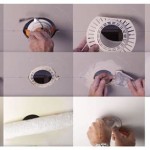Choosing the Right Ceiling Spotlight Bulb Type for Your Lighting Needs
Ceiling spotlights are a versatile and energy-efficient lighting solution that can enhance the ambiance and functionality of any space. When it comes to choosing the right ceiling spotlight bulb type, there are several essential aspects to consider, including the type of light output, bulb shape, wattage, color temperature, and beam angle. Understanding these factors will help you make an informed decision that meets your specific lighting requirements.
Bulb Types
Incandescent: Incandescent bulbs are the traditional type of light bulb that emits light by heating a filament. They are relatively inexpensive but less energy-efficient than other options. Incandescent bulbs come in a variety of shapes and wattages and offer a warm, yellow-tinted light.
Halogen: Halogen bulbs are a more efficient type of incandescent bulb that uses a halogen gas to produce light. They produce a brighter, whiter light than traditional incandescent bulbs and have a longer lifespan. Halogen bulbs are available in both clear and frosted finishes.
LED: LED (Light-Emitting Diode) bulbs are highly energy-efficient and long-lasting, making them a popular choice for ceiling spotlights. They produce a bright, even light without flickering and are available in a wide range of color temperatures and beam angles. LED bulbs come in a variety of shapes, including MR16, GU10, and E27, and are designed for specific types of spotlights.
Bulb Shape
The shape of the bulb is determined by the type of spotlight fixture you have. Common bulb shapes for ceiling spotlights include:
- MR16: A compact, cylindrical-shaped bulb with a two-pin base
- GU10: A small, cylindrical-shaped bulb with a two-prong base
- E27: A standard-sized, screw-in bulb
Wattage
The wattage of the bulb determines the brightness of the light it emits. Wattage is measured in watts (W). Higher wattage bulbs produce brighter light, while lower wattage bulbs produce less light. The appropriate wattage for your ceiling spotlight depends on the size of the room and the desired level of brightness.
Color Temperature
Color temperature refers to the color of the light produced by the bulb and is measured in Kelvins (K). Different color temperatures evoke different moods and atmospheres:
- Warm White (2700-3000K): A warm, yellowish light that creates a cozy and welcoming ambiance.
- Neutral White (3500-4100K): A neutral, white light that is suitable for most general lighting applications.
- Cool White (5000-6500K): A bright, bluish-white light that is ideal for task lighting and areas where high visibility is required.
Beam Angle
The beam angle of the bulb determines the spread of the light. Narrow beam angles create a focused beam of light, while wide beam angles produce a more diffused light. The beam angle should be selected based on the intended use of the spotlight. For accent lighting, a narrow beam angle is preferred, while for general illumination, a wider beam angle is more suitable.
Conclusion
By considering the bulb type, shape, wattage, color temperature, and beam angle, you can choose the right ceiling spotlight bulb for your lighting needs. Whether you require warm ambiance, neutral lighting, or bright task illumination, there is a bulb option that will meet your requirements. With careful consideration of these factors, you can create the ideal lighting scheme for your space.

Led Light Bulbs Cap Types Downlights Co

What Is A Gu10 Spotlight Bulb Lightbulbs Direct

Everything There Is To Know About Gu10 Bulbs

4 Way Led Ceiling Spot Lights Fitting Kitchen Spotlight Gu10 Light Bulb

6 Diffe Types Of Led Downlights Top Downlight Companies

10 Pack E27 5 Watt Led Es Spotlight Light Bulbs Litecraft

Led Spotlight Bulb Type 3 Watts Holder

Mr16 Led Bulb 40 Watt Equivalent 12v Ac Dc Bi Pin Spotlight 300 Lumens Super Bright Leds

Stanjo Cool White 5w Ceiling Led Spot Light Bulb

Ranpo Dimmable Led Spotlight Bulb B15 E12 E27 Mr16 Dc 24v 3w 4w 5w Ceiling Light Colorful Lazada
Related Posts








